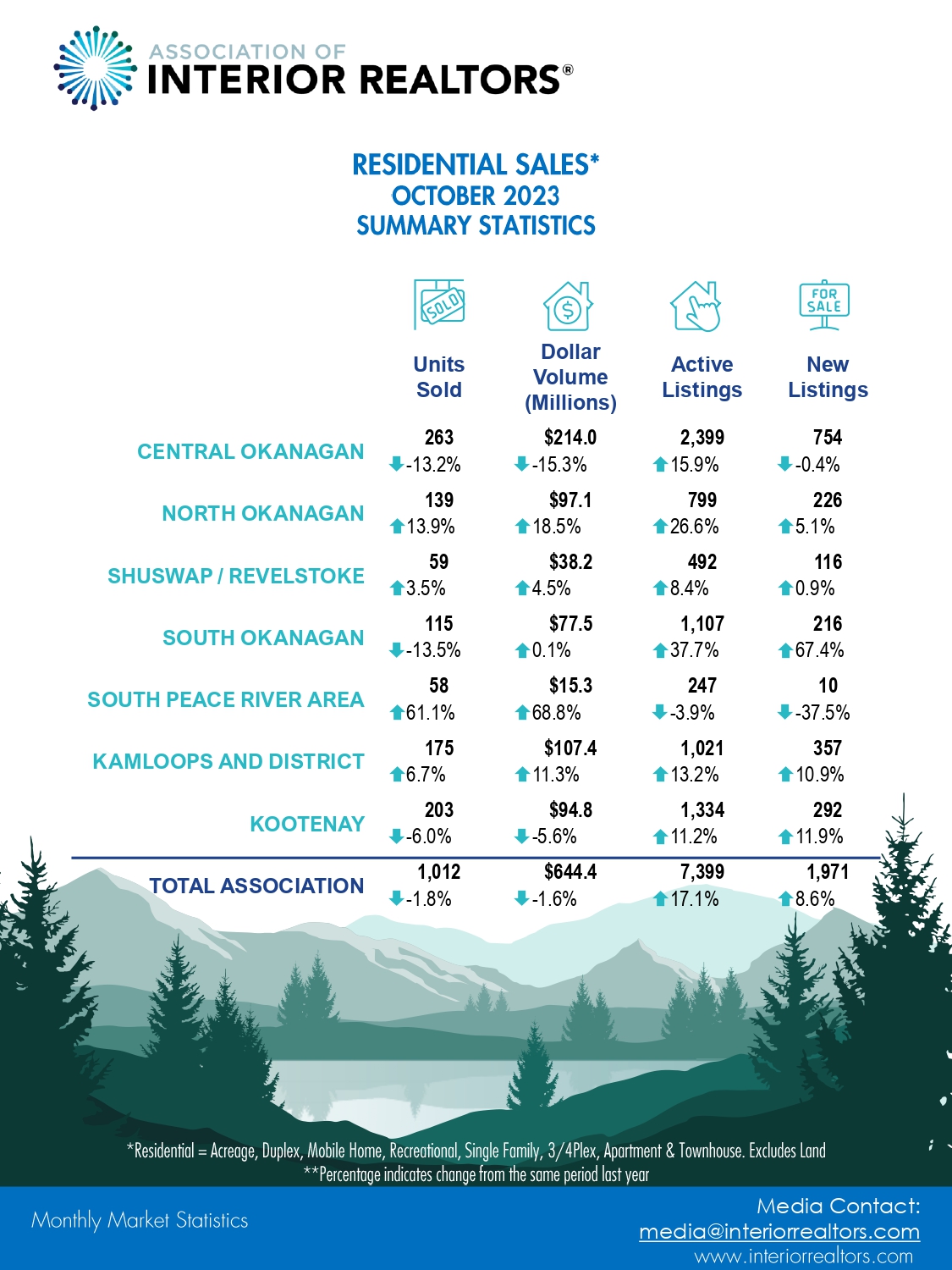Residential sales in the Kamloops and District region remained below the 10-year average throughout the third quarter of 2023, affected by high-interest rates and a severe fire season. During this quarter, the Association of Interior REALTORS® transacted 652 residential sales in the region, worth $397.1 million. This represents a 13.6% increase in the number of sales and a 17.2% increase in dollar volume compared to the same period in 2022. However, it’s important to note that this year-over-year growth can be misleading. The local market ground to a standstill in the fall of 2022, as sales plummeted to 10year lows each month, a consequence of the sudden increase in interest rates. First-time homebuyers in the market have almost disappeared, and those that remain are resetting their expectations. Buyers are now considering townhomes over single-family houses, realizing the value of early entry into the real estate market for building equity.
As of September2023, home prices in Kamloops have dropped by 6.8%comparedtotheall-timehighinMay2022.Nevertheless, prices in the region have experienced remarkable growth, almost doublinginjustfiveyears,fromabenchmarkpriceof$385,100in September 2018.Most buyers built substantial equity in their properties, and only a few have observed declines in property values compared to their purchase prices. Even those who purchased their homes at the peak of the market in 2022 still maintain positive equity thanks to their mortgage repayments. This positive equity situation has limited the number of foreclosures in the market, despite rising interest rates. The impact of higher interest rates appears to be having the desired impact on the Canadian economy. Several economic indicators reveal that although the economy remains resilient, it’s losing momentum. The labor market has also exhibited strength with a notable 5.0% increase in wages recorded in September2 023.While this could be interpreted as positive news for individuals grappling with rising prices, it also introduces the possibility that workers are bracing for further inflation. The Bank of Canada has stressed the importance of addressing inflation promptly, cautioning that delayed actions may render control more challenging, given heightened public expectations of sustained price increases. Analysts remain divided on the Bank of Canada’s decision regarding interest rates on October 25, 2023. However, the consensus is that the Bank will be cautious about lowering interest rates again and rate cuts are not anticipated any earlier than the second half of 2024. Entering winter, the housing market is expected to slow, driven mainly by local buyers. Rising interest rates affect homeowners, impacting cash flow more than causing negative equity. Those with variable or renewing mortgages must allocate more income to payments. Despite this, Kamloops maintains an affordable housing market, with lower home values offsetting rising interest rates. The market slowdown offers reduced competition and more choices for buyers compared to peak pandemic activity.

 Facebook
Facebook
 X
X
 Pinterest
Pinterest
 Copy Link
Copy Link

